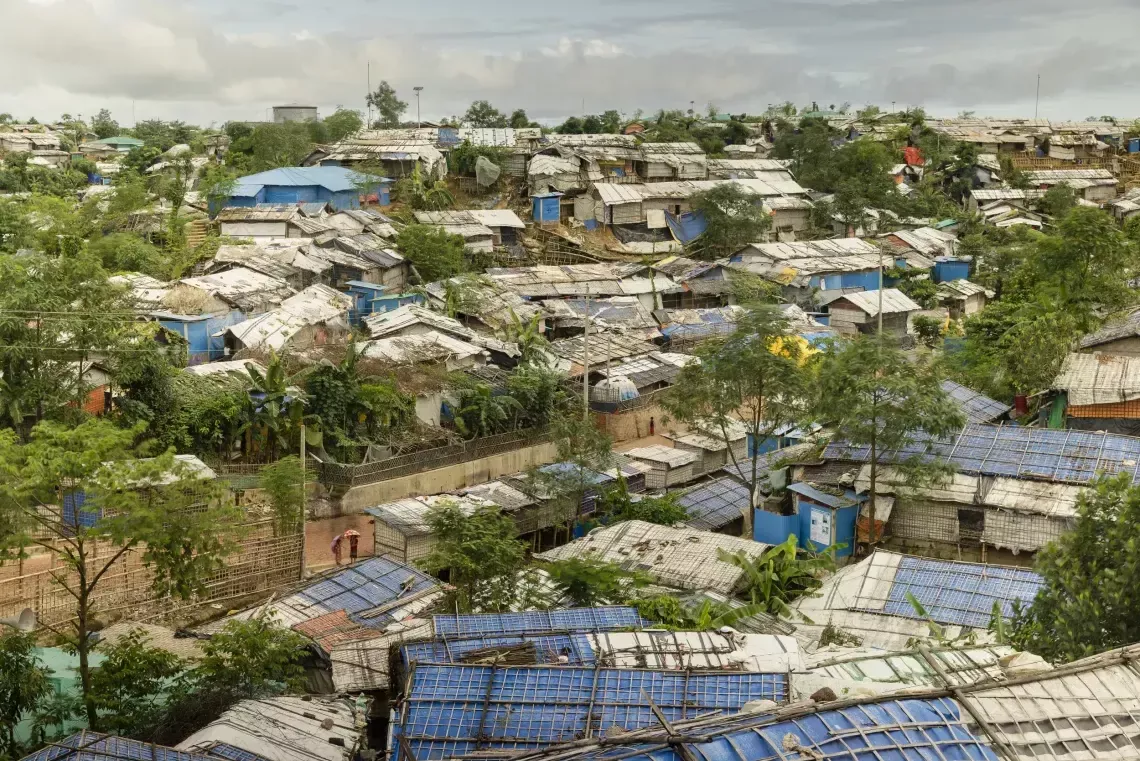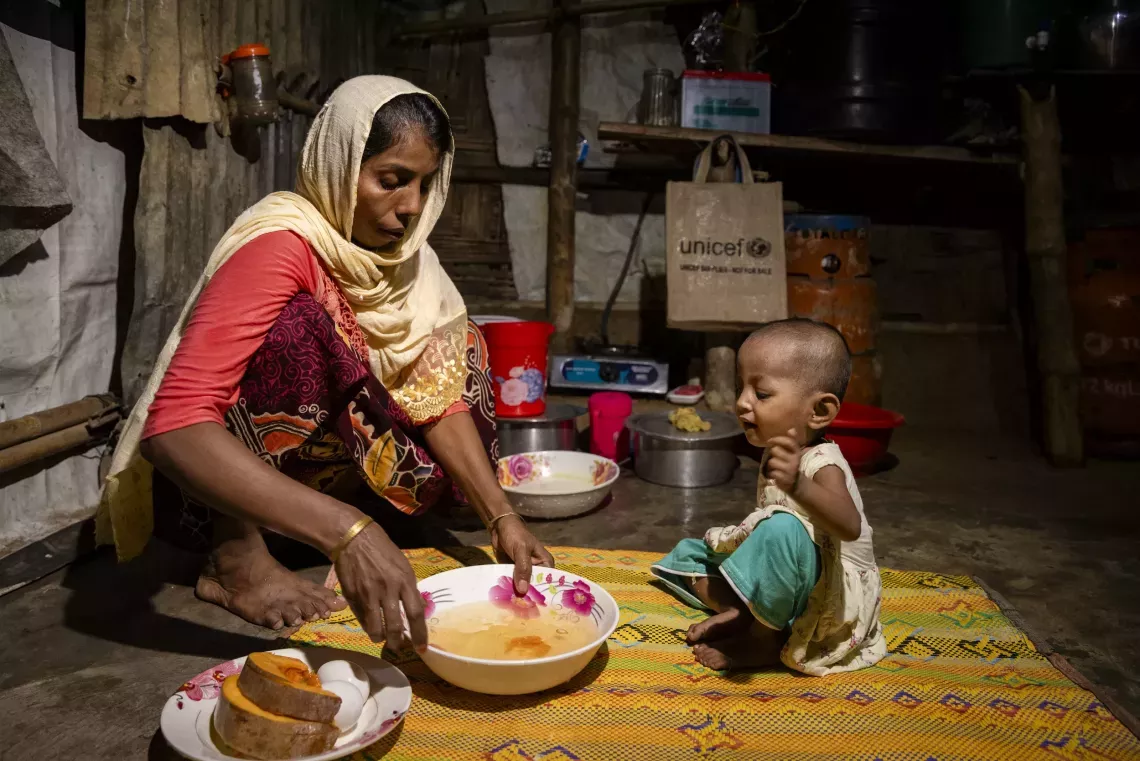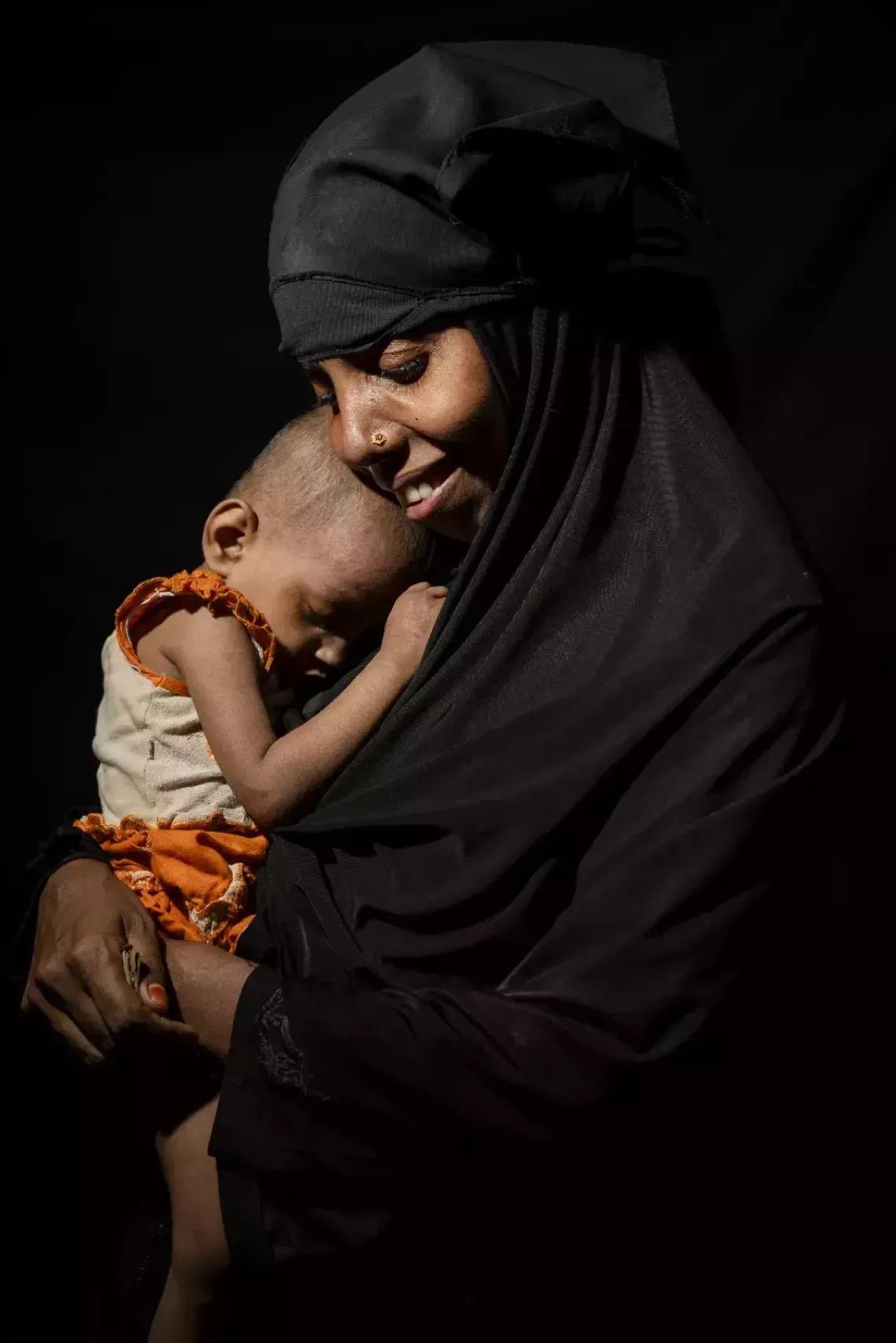When Rubeda was pregnant with her fourth child, Sofiba, in the Rohingya refugee camps, she worried if she would have enough nutritious food to eat for herself and her unborn child. Despite her concerns, her daughter was born healthy and happy.
But days later, Sofiba developed fever and diarrhoea and began losing weight rapidly. Rubeda often took her to a hospital when she became sick and was constantly concerned about her health. At their shelter, they were visited by a community nutrition volunteer who determined that Sofiba was suffering from severe wasting – the most dangerous form of malnutrition – and was at higher risk of disease and death.
“I felt helpless; my baby did not play much,” Rubeda says. “She was weak and could not walk.”
About a million Rohingya – half of them children – have spent seven years in exile from their home country in the world’s largest refugee camp in Cox’s Bazar, in southern Bangladesh. Many of the Rohingya children, around 30,000 per year, have been born into this limbo. Living in highly congested camps, the Rohingya are highly exposed to weather-related hazards such as cyclones, fires, flooding, and landslides. The Monsoon season also exacerbates the risk of diseases – such as diarrhea, dengue, malaria, or cholera.

A view of the Rohingya refugee camps. © UNICEF/UNI622234/Njiokiktjien
The nutritional situation in the Rohingya refugee camps has deteriorated as refugees solely depend on humanitarian assistance with limited or no other source of livelihood. According to recent surveys, 15.1 per cent of Rohingya refugee children suffer from wasting, meaning they are too thin for their height, which is a critical level above the WHO-UNICEF emergency threshold. Chronic malnutrition has remained very high and unchanged for the past two years affecting over four out of 10 children.

Rubeda prepares a meal for Sofiba at their shelter. © UNICEF/UNI622146/Njiokiktjien
While Rubeda receives a monthly food ration, like all Rohingya refugees, she says they were not enough for her entire family as they rations shrank. “My husband cannot work – he is very weak,” says Rubeda, describing her family’s situation. “Food lasts however long we can – we are not that well off.”
Slow but steady progress
On a recent morning, Rubeda held Sofiba closely while waiting for a regular check-up at an integrated nutrition facility. The cries of infants filled the air as mothers comforted their children while nutrition volunteers and workers swiftly went about their work.

Staff explain Sofiba’s growth chart to Rubeda during a regular check-up at the integrated nutrition facility. © UNICEF/UNI622322/Njiokiktjien
At this integrated nutrition facility, one of 34 supported by UNICEF in the camps, children, caregivers, and pregnant and lactating women receive an array of life-saving preventive and curative nutrition services. These include screening of under-5 children for the early detection of malnutrition, emergency nutrition supplies to treat severe wasting, nutrition counseling, growth monitoring and cooking demonstrations for caregivers to promote optimal infant and young child feeding.
After waiting in line, Rubeda was called by volunteers who measured Sofiba's height, weight, and mid-upper arm circumference to assess her nutritional status. Afterwards, she received counseling from nutrition workers on diverse diets and how to prepare nutritious meals for herself and her child. Sofiba's appetite was tested before Rubeda collected packets of ready-to-use therapeutic food (RUTF), an energy dense, micronutrient paste used to treat children suffering from severe wasting.


Since they started coming to the facility, Sofiba has made slow but steady progress. Her mid-upper arm is still thin, but she continues to gain weight and grow taller since she was first admitted for treatment.
While the ordeal has weighed heavily on Rubeda, who is three months pregnant and appears tired after receiving all the nutrition services, she is determined and hopeful to see her daughter improve.
“She still needs to gain [more] weight for her health to improve,” says Rubeda. “I wish for my baby to be able to walk soon.”